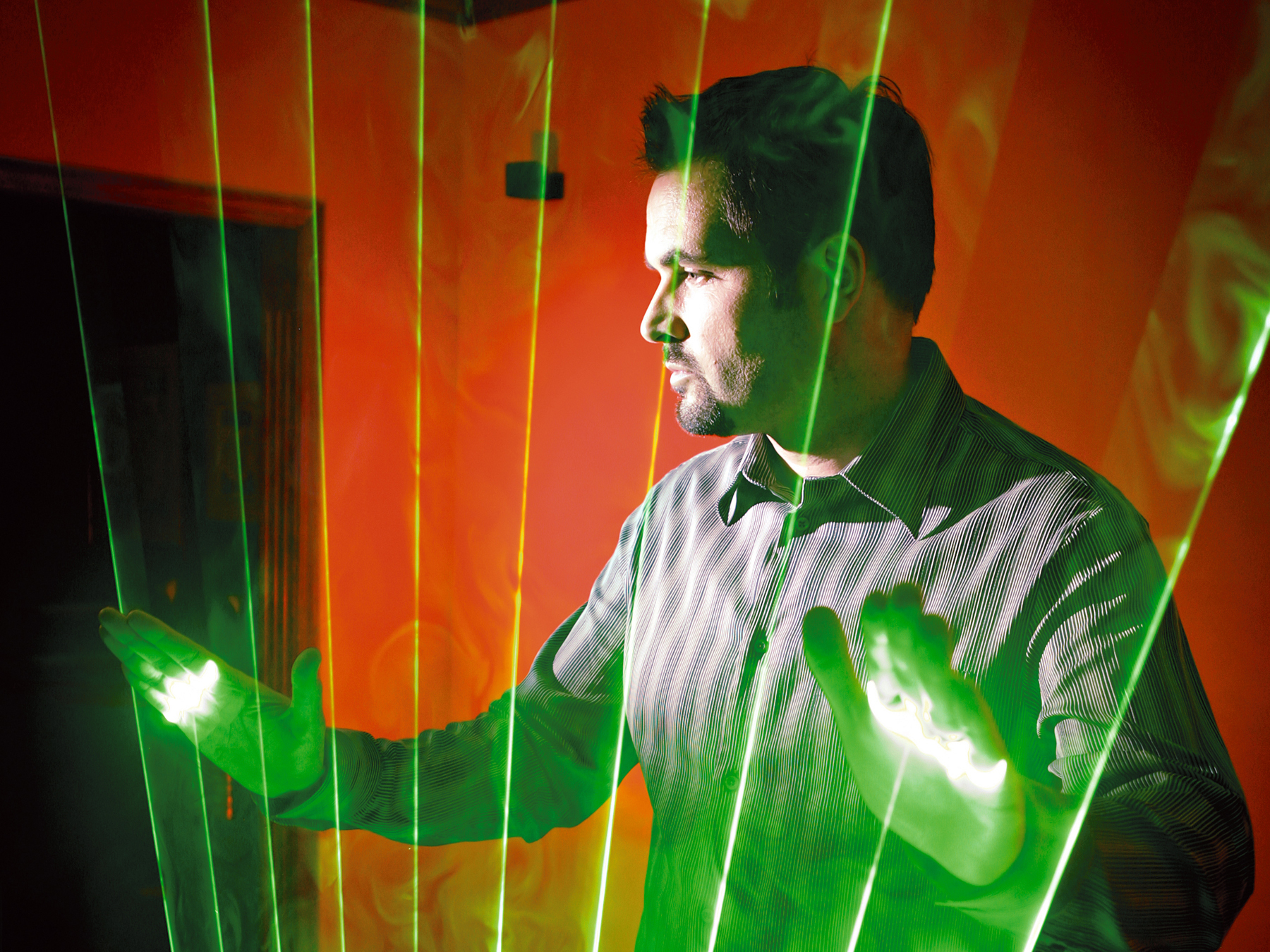One of my most vivid concert memories is seeing Jean Michel Jarre perform in 1986 at the city of Houston’s 150th birthday celebration. He played music by breaking laser beams with his hands. The beams came out of the stage and went off into space, and for a long time I thought it was a fake — I couldn’t understand how this instrument could work without any sensors above. That started me researching and tinkering, and 22 years later, I figured it all out and built my own.
Now I have several versions of the laser harp. The one I perform with uses a powerful laser and a scanning mirror system, designed for professional lighting effects, that splits one beam into multiple beams that can fan out and move dramatically. This article describes a simpler harp I designed more recently, which uses inexpensive laser pointers and doesn’t need the scanner.
The harp works as a MIDI controller, so it doesn’t make sound itself, but generates a stream of MIDI data to drive an audio synthesizer. Each beam strikes a photocell, and when the player’s hand interrupts it, the sensor prompts an Arduino microcontroller to send a MIDI “Note On” message. Additionally, a range sensor reads the position of the hand, which spawns MIDI controller messages that change the sound’s qualities.
First I’ll show how to make a single-beam laser theremin, which changes pitch with the position of your hand. Then we’ll replicate the circuit and reprogram the Arduino to produce a multi-string laser harp, with each beam corresponding to a different note. The Arduino has 6 analog inputs, so this harp is limited to 6 beams, but at the end of the article I’ll suggest ways to expand it.
Resources



